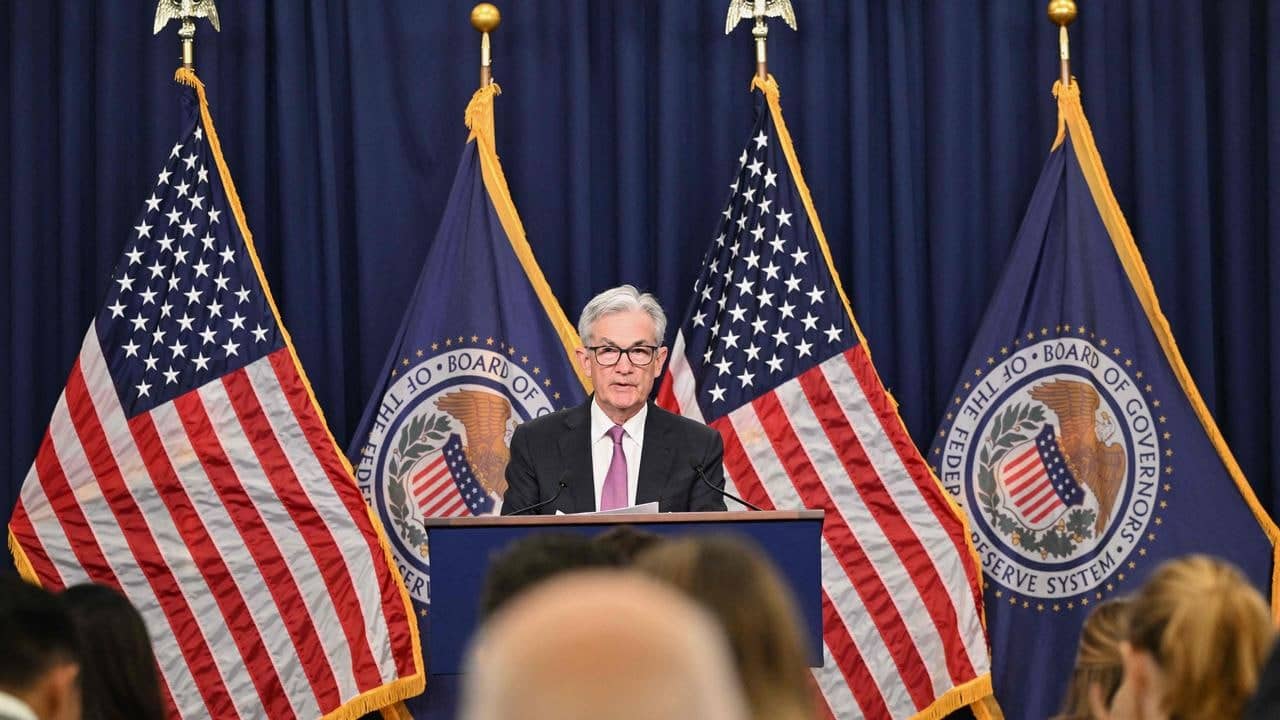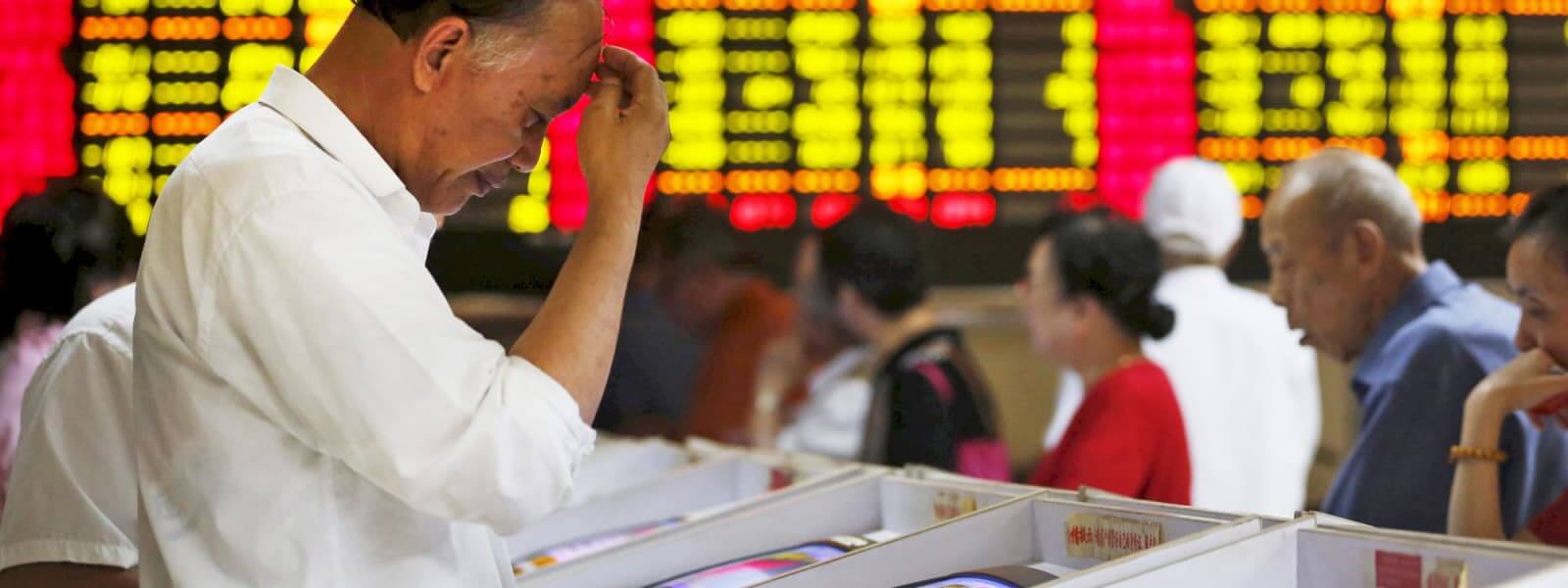
Asian equity markets are mostly lower this morning reflecting concerns about downside risks to economic growth. China saw a fall in its trade surplus in November. Both exports and imports slipped possibly partly due to Covid restrictions. Australian GDP rose by 0.6% in Q3 down from 0.9% in Q2. That deceleration may boost hopes that interest rates in Australia will soon peak. German industrial production fell by a smaller than expected 0.1% in October, while September was revised up. In the UK, the Halifax house price index for November recorded its biggest monthly drop since 2008.
Today’s Bank of Canada monetary policy update is expected to result in a seventh consecutive interest rate hike but there is uncertainty over how much they will be raised. Each of the last two meetings has seen a slowing in the pace or increases from 100 basis points in July to 75bp in September and 50bp in October. A majority of forecasters are expecting a further deceleration today to just a 25bp rise, which would take the policy rate to 4.0%. However, a sizeable minority look for another 50bp increase and, with last week’s stronger than the expected labour market report providing support for the larger move, the outcome is not a foregone conclusion.
Possibly of even more interest to markets will be any signal of where rates are likely to peak. Many economists think that the BoC may at least pause its hiking either after today’s announcement or the next one in late January. Moreover, market pricing points to a peak rate of about 4.30% around 65bp below the expected high point in the US.
Most of today’s data are updates to previous releases. In the Eurozone, Q3 GDP growth is expected to be left unrevised at 0.2%. However, the report will include new detail on the drivers of growth. The estimate for Q3 employment will provide further indications of the strength of the labour market.
In the US, Q3 labour productivity growth is expected to be revised up which should lower the rate at which unit labour costs rose during the quarter. Nevertheless, labour costs are still expected to be growing a rate that the Federal Reserve is likely to regard as too high for it to achieve its inflation target. Finally, in Japan Q3 GDP is predicted to be revised up modesty although it is still thought to have fallen compared with Q2.
Early Thursday, the UK’s RICS house price balance for November will be released. Concerns that higher interest rates are having a negative impact on the housing market have already shown up in some data and it will be interesting to see if that will also be seen here.
Bond yields saw small drops in both the UK and the US yesterday. Meanwhile, in currency markets, the US dollar posted gains against both the euro and sterling.

Asian equity markets are mostly lower this morning. Yesterday’s stronger than expected US economic data and media reports that the US Federal Reserve may predict a higher peak for interest rates next week have dampened hopes of an early end to interest rate hikes. The Reserve Bank of Australia as expected raised interest rates by 25 basis points at its latest policy update. Its statement said that inflation remained too high but that medium-term expectations were well anchored. October German factory orders rose by a higher-than-expected 0.8% and September was revised up.
Today’s data calendar is very light. In the UK, the construction PMI report for November will provide a timely update on a very interest rate sensitive sector ahead of next week’s Bank of England monetary policy meeting. In October, the headline rose to its highest level for five months led by a surge in commercial building. Other parts of the sector were less strong as housing activity slowed and civil engineering output fell for the fourth month in a row. The consensus expectation is that activity rose again in November at a pace that was only slightly below the previous month. However, growth expectations for the year ahead were very subdued last time and seem likely to be so again in the latest report, which suggests that the current bounce in activity will not be sustained.
In the US, already released October data for international trade point to another substantial rise in the overall trade deficit. International trade made a positive contribution to Q3 GDP growth as US exports accelerated and import growth slowed. However, the deficit rose in September and seems to have risen even further early in Q4. That deterioration may reflect a loss of competitiveness due to the strong dollar but the negative impact on demand for US exports due to slowing growth around the world is also probably a factor.
November trade figures for China, due early Wednesday, will provide further information on international trade conditions. Both export and imports are expected to have slipped in part due to the impact of the latest Covid lockdowns. Those may have restricted the supply of products for export and demands for imports. Meanwhile, Australian Q3 GDP is forecast to show a slowdown in growth from Q2, which if confirmed would raise the odds that the Australian central bank may soon stop raising interest rates.
US Treasury yields rose yesterday after the stronger-than-expected US data but UK gilt yields were down on the day. In currency markets, the US dollar rebounded against both the euro and sterling as markets took onboard the possibility of a higher terminal rate for US interest rates.

Equities across the Asia-Pacific region are mostly trading higher this morning in response to optimism of a further reopening of China’s economy from Covid restrictions. Yesterday, Shanghai joined other major Chinese cities in scrapping PCR testing requirements to enter outdoor public venues – in a sign that the authorities were driving a gradual shift away from the strict zero-Covid policy that has been in place, and which had led to a number of public protests. The ongoing impact of the lockdown measures on service sector activity in China were shown by a third straight fall in the Caixin services PMI in November, which dropped from 48.4 in October to 46.7 in the latest reading.
The coming week’s data calendar is again relatively light in terms of big hitters as markets square up to monetary policy updates in the following week from the Fed (14 Dec), the ECB (15 Dec) and the BoE (15 Dec). With the pre-meeting quiet or blackout period in place, there are no scheduled Fed or BoE speakers, and the few ECB speakers are expected to refrain from commenting on monetary policy decisions. Nevertheless, a number of survey indicators will provide additional insight into current economic trends.
In the UK today, the final November services PMI is expected to confirm the preliminary ‘flash’ report showing a second consecutive month of contraction at 48.0. Taken together with the manufacturing report, the survey is signalling a negative outturn for Q4 GDP growth, which would be a second consecutive quarterly contraction. Similarly, the final November Eurozone services PMI is forecast to confirm the ‘flash’ estimate of 48.6, consistent with contraction for a fourth straight month, and the likelihood of a negative outturn for Q4 GDP growth.
In the US, we forecast the ISM services to have declined to 53.0 (from 54.4) in November which would still signal expansion albeit at a slower pace. The alternative PMI-based measure of US services activity has been below the 50 level for the past five months. Notably, the latter excludes the public sector, construction, mining, utilities and wholesale and retail trade.
Overnight, the BRC will release its latest ‘unofficial’ UK retail sales figures for November which will provide an indication of consumer outlays (unadjusted for inflation) at the start of the festive shopping period. Elsewhere, despite the recent soft Australia October inflation outturn, the Reserve Bank of Australia is predicted to hike by another 25bp to 3.10%.
Hopes of a further reopening of the Chinese economy has boosted market risk sentiment. Notably, the US dollar has fallen against most of its major peers and in most cases reversed the moves seen after last Friday’s strong US payrolls report. GBP/USD has moved back above 1.23, while the euro has edged above 1.0550 and to its highest level versus the dollar since late June.

Asian equity markets are lower this morning showing caution ahead of some key US data. US Federal Reserve policymaker Williams reaffirmed the guidance made by other Fed officials that interest rates will need to go higher to control inflationary pressures. Meanwhile, European Central Bank President Lagarde emphasised the need to anchor inflation expectations. EU officials have expressed optimism that a deal will soon be reached with the UK on the Northern Ireland aspects of the Brexit agreement.
The key economic release of the day for markets will be the monthly US labour market report. Always seen as a bellwether of US conditions, it is currently even more important as the Federal Reserve tries to work out whether inflationary pressures are easing. Recent US inflation data suggests that upward pressures on prices from international developments are easing. However, the Fed is also concerned about domestic pressures, not least the impact of tight labour market on wages.
The October report showed a solid rise in employment, a small move up in the unemployment rate – to a still very low 3.7% – and signs that, while wage growth has levelled off, it remains uncomfortably high compared with the 2% inflation target. We expect a similar outcome for November indicating no significant easing in pressures. That would seem consistent with the Fed’s policy guidance that the pace of interest rate hikes will now slow but rates still have further to rise.
Today’s Canadian labour market report will also be interesting particularly as the Bank of Canada will give its latest monetary policy update next week. As is the case with the US, the BoC has to balance signs that international inflationary pressures have eased against ongoing concerns about a tight labour market. Today’s report is expected to show wage growth still above the level that would be consistent with the BoC’s inflation target, while the labour market is only expected to show very tentative signs of easing up. Forecasters are divided Economists are divided on whether the BoC will again raise rates by 50 basis points next week or opt for a smaller rise of 25bp.
Richmond Federal Reserve President Barkin and Chicago Fed President Evans are scheduled to speak today but they are unlikely to provide any clues on the US interest rate outlook. Neither of them vote on interest rate changes this year but previous comments suggest that they will be supportive of another rate hike.
Bond yields in both the UK and the US continued to move lower yesterday as data in the US supported hopes that inflationary pressures may be easing. In currency markets, the US dollar slipped further against both the euro and sterling as hopes of an early peak in US interest rates continued to rise.

Asian equity markets were buoyed by Fed Chair Powell’s remarks last night that the pace of hikes may moderate in the upcoming December meeting. The risk-on tone was also supported by reports that China may be easing its stance on Covid restrictions. Data released overnight showed China’s November Caixin manufacturing PMI edged up to 49.4 from 49.2 but remained in contraction territory. Earlier this morning, Germany reported a sharper than expected drop in retail sales, while UK Nationwide house prices also fell in the month-on-month comparison.
This morning’s November PMI manufacturing reports for the UK and the Eurozone are final updates. The initial ‘flash’ readings remained below the key 50 expansion/contraction level in the UK (46.2) and the Eurozone (47.3) for a fourth and fifth consecutive month, respectively. The survey indicates that the manufacturing sector is leading the downturn, but services are also in contraction territory. The overall signal is negative Q4 GDP growth in both jurisdictions. The better news is that there are tentative indications that underlying inflationary pressures, while still elevated, may be starting to ease.
There will also be focus on the latest update of the Bank of England’s ‘Decision Maker Panel’ (DMP) survey of businesses. Notably, last month’s survey showed a significant fall in 1-year ahead CPI inflation expectations to 7.6% from 9.5%, while for 3 years ahead it fell to 4.0% from 4.8%. These figures, nevertheless, remain elevated and add to the case for further monetary policy tightening.
The highlight of this week’s US data calendar is tomorrow’s monthly labour market report. For today, the November ISM manufacturing index is forecast to show activity in the sector stalling – we expect the headline index at 50.0. Meanwhile, the Fed’s preferred inflation gauge, the PCE deflator, is expected to confirm the message of the already released CPI data that inflation slowed in October but is still significantly above target. We forecast the headline PCE deflator to edge down to 6.1% from 6.2% and the core measure excluding food and energy to fall marginally to 5.0% from 5.1%.
Fed Chair Powell’s comments last night resulted in significant declines in the US dollar and Treasury yields. As a result, the pound rallied above $1.21 with similar gains for the euro versus the greenback. US 10-year Treasury yields declined from near 3.8% towards 3.6%, while market pricing for peak US policy rates next year fell.

Asian equity indices are mixed, trading lower in Japan and China but higher in most other parts of the continent, as investors continue to assess the Covid situation in China. China’s November official PMIs were weaker than expected and remained in contraction territory at 48.0 for manufacturing and 46.7 for non-manufacturing. In the UK, business confidence fell in November (see below), while the British Retail Consortium reported a further rise in shop price inflation, including an acceleration in food inflation to a record 12.4%y/y.
Overnight, business surveys for November were released. They showed overall business confidence falling by 5 points to 10%, the lowest since February 2021 (a 21-month low). Firms’ optimism for the economy decreased for a sixth month in a row and their own trading prospects were also lower. There were tentative signs of less vigorous pay growth, but firms’ expectations for their own prices rose to a new high.
The Bank of England has indicated that further interest rate rises are likely required to bring inflation back down. BoE Chief Economist Huw Pill speaks at an event this morning.
In the Eurozone, the preliminary flash estimate for November CPI inflation will be closely watched. Yesterday saw a bigger than expected fall in Spanish inflation, while German inflation declined in line with expectations. French inflation data this morning was steady. Overall, Eurozone headline inflation looks set to fall for the first time in 17 months to 10.4% from 10.6% in October. As a result, after hiking by 75bp in the last two policy meetings, the ECB may lean towards a smaller 50bp rise in December.
The US Fed’s policy outlook signals have been nuanced. On the one hand, the hiking pace looks set to moderate next month after four successive 75bp increases. On the other, policymakers have indicated that the level of interest rates may end up higher for longer to reduce inflationary pressures. Fed Chair Powell’s remarks on the economic outlook and the labour market this evening will draw the most attention later today. Before that, there are several data releases including an update on the Q3 GDP estimate and the ADP employment report ahead of Friday’s official figures.
Early Thursday, China’s Caixin manufacturing PMI survey is due. The Caixin survey has a smaller sample size than the ‘official’ PMIs released overnight and referred to above, but it tends to capture the activity of smaller private firms compared with the official survey. The consensus forecast is a fall to 48.9 from 49.2.
US Treasury yields were slightly lower overnight ahead of Fed Chair Powell’s speech later today. The US dollar was also broadly softer, although the pound remained below $1.20 and was marginally lower against the euro.

After yesterday’s falls in global equities which seemed to be prompted by concerns about protests in China, most Asian equity markets are up this morning. The moves have been led by a substantial rebound in Chinese market indices as China’s National Health Commission announced that there would be a press briefing this morning on Covid-related restrictions. However, initial indications are that there is no substantive change in Covid policy. Some US Federal Reserve policymakers cautioned yesterday that hopes of an early end to interest rate rises may be premature. Richmond Fed President Barkin said he favoured a rate path that was “probably longer and potentially higher”.
In the UK, October money supply and bank lending data will provide an indication of the impact of recent rises in interest rates. In particular, a decline in mortgage approvals and secured lending seems likely as the data covers the period immediately after the mini-Budget when mortgage rates were at a recent peak.
In the Eurozone, both the manufacturing and service sectors have seen sharp falls in business confidence this year and the European Commission measures both hit new 2022 lows in October. They are forecast to have stayed close to those lows in November but the recent easing in energy price inflation makes it slightly more likely that the energy-intensive manufacturing sector may see a modest rebound.
Also in the Eurozone, November CPI data for Spain and Germany may provide hints on tomorrow’s inflation outturn for the Eurozone as a whole. Last month, Spanish inflation slipped while price rises in Germany accelerated.
In the US, the Conference Board measure of consumer confidence is predicted to have fallen for the second month in a row. Meanwhile, house prices indices for September are expected to record a fall reflecting the recent slump in the housing market.
Bank of England Governor Bailey is scheduled to testify to a House of Lords Committee this afternoon. So far, BoE policymakers have stayed quiet on whether the recent budget will have had any real impact on the BoE’s plans for interest rates, so one thing markets will be looking for today is whether Bailey has anything to say on this.
Early Wednesday, the November reading of the Lloyds Business Barometer will show whether business confidence has fallen again. In October it slipped, albeit only marginally, for the fourth time out of the last five months.
Bond yields in both the UK and the US initially slipped yesterday as ‘risk off’ sentiment in markets was further fuelled by protests in China. However, yields then rebounded and ended the day little changed. In currency markets, the US dollar picked up against both the euro and sterling.

Equities across the Far East have tumbled overnight in response to growing unrest over Covid restrictions in China. Concerns that rising case numbers and ongoing protests could lead to further supply chain disruption and dampen consumption are weighing on sentiment with oil prices also moving lower overnight along with a number of base metals. Meanwhile, Australian retail sales fell 0.2% in October against market expectations for a 0.5% monthly rise.
Over the past week, hopes of an early easing in the pace of monetary policy tightening have continued to build. That has helped fuel a further slide in bond yields with US 10-year Treasury yields dropping close to their lowest levels since early October, while UK 10-year gilt yields have touched below 3.0% for the first time since early September. However, central banks continue to face the dilemma of balancing growth and inflation risks and so are conscious of the risks of tightening too much or too little.
As a result, the emphasis now seems to be on a more measured pace of tightening. Last week’s release of the minutes to the November Federal Reserve monetary policy meeting and comments from Fed officials again indicated that after four successive 75 basis points rate hikes, a smaller rise of 50bp is likely at the next Fed meeting in mid-December.
Comments from Bank of England and European Central Bank policymakers have generally been a little more guarded. In particular, ECB officials seem to be indicating that the December policy decision will be a close call. But on balance both seem to be signalling that their next moves are likely to see smaller rate rises than the 75bp moves approved last time. Later today, ECB President Lagarde is due to speak in front of the European Parliament’s Economic and Monetary Affairs committee and markets will be watching closely for clues over the outlook for monetary policy. However, with her appearance coming just ahead of the next Eurozone CPI report on Wednesday, her comments may be somewhat guarded.
Elsewhere, there is a lack of any tier 1 economic data releases today. Eurozone M3 money supply data is forecast to show a moderation in annual growth from 6.3% to 6.1% in October. In the UK, the CBI survey will provide one of the first indications of spending trends heading into the key Christmas period, ahead of the more closely watched ONS report on 16 December, albeit the survey will not capture the full effect of Black Friday sales.
In the US, today’s focus will be on comments from Fed members Williams and Bullard. However, markets are likely to pay more attention to Fed Chair Powell’s comments on Wednesday.
Events in China have led to a deterioration in market risk sentiment, pushing the US dollar and US Treasury bonds higher. GBP/USD has moved lower as a result but continues to hold above the 1.20 mark, while EUR/USD is currently trading just below 1.04. The Brent crude oil prices has also seen a further decline to around the recent low in late-September.

Asian markets are mixed to lower amid subdued trading as investors assess prospects for further, but potentially slower, interest rate hikes among major central banks, as well as rising Covid case numbers in parts of China. Japan reported higher than expected inflation figures for Tokyo (which are released before the national data), led by energy and the weak yen. The Bank of Japan, however, broadly considers the country’s inflationary impulse as temporary. US markets are set to close early later today following yesterday’s Thanksgiving holiday, with Black Friday marking the start of the festive shopping season.
Today’s calendar is sparse in terms of scheduled economic data or events. German third-quarter GDP figures, released earlier, were revised up to show growth of 0.4%q/q after previously already surprisingly on the upside with 0.3%q/q. Latest survey evidence, however, suggests the economy is slowing and may contract in the current quarter. However, yesterday’s improvement in the closely watched IFO survey provided some hope of a relatively early end to the downturn in activity. German GfK consumer confidence, also published earlier this morning, edged up for a second month but remained negative at -40.2.
Attention will likely turn to next week. The main global focus will be on the US labour market report, Eurozone flash CPI inflation and China official PMIs. Fed Chair Powell is scheduled to speak on the economic outlook and ECB President Lagarde will appear before a European Parliament committee.
In the UK, the Bank of England will publish its latest money data, including consumer credit, secured lending and the number of mortgage approvals. Several business surveys will be published, including the CBI’s distributive trades survey, the Bank of England’s ‘Decision Making Panel’ and our own Lloyds Bank Business Barometer.
The pound rose to a three-month high above 1.21 against the US dollar, although it has edged a little lower overnight. The most recent rally was supported by comments from BoE rate-setters confirming that interest rates will likely have to rise further to curb inflation despite the economic downturn. The euro also rallied to above 1.04, reflecting prospects of higher ECB interest rates and broader dollar weakness. Oil prices, meanwhile, steadied but may end lower for a third consecutive week.

Asian equity markets are generally up this morning following gains in European and US markets yesterday. Minutes from the November US Federal monetary policy confirmed that policymakers now favour slowing the pace of US interest rate increases. China signalled the likelihood of more monetary policy stimulus including a probable cut in banks’ reserve requirement ratios. US markets will be closed for the Thanksgiving holiday today.
Yesterday’s November UK PMI data showed both manufacturing and services headline indices still stuck below the key 50 level that signals a contraction in activity. Manufacturing output declined at a faster pace than services and with overall volumes of work down for the fourth month in a row and export orders particularly weak there appears little prospect of a near-term rebound. Today’s November update for the CBI industrial survey will provide another timely update on the factory sector and the message is expected to be the same. Orders are predicted to have slipped for a fourth successive month signalling continued downside risks for the sector.
The German IFO survey for November is expected to have posted another weak reading for the current situation index with its level likely to remain close to October’s nineteen month low. However, on a more optimistic note it will be interesting to see if the expectations component improves for a second successive month, on the back of the recent fall in wholesale gas prices which offers hope of an easing in energy prices.
Sweden’s Riksbank is likely to raise interest rates for the fourth successive time this morning, following up on September’s 100 basis point hike with a 75bp rise. The central bank is also expected to raise its forecast for the level at which rates will peak but more positively it may signal that the end of the tightening cycle may not be far off.
The minutes of the European Central Bank’s October policy meeting will be watched for any clues on what is planned for the next update in December. The market expectation is that after two successive interest rate increases of 75bp it will next opt for a smaller rise of 50bp. However, ECB policymakers face a major dilemma because while the weakening activity picture certainly points in that direction still elevated inflation numbers certainly do not. In the UK, three Bank of England policymakers are scheduled to speak, and their comments may provide new clues on how much further UK interest rates are likely to rise.
US bond yields continued to slide yesterday helped by mixed economic data and the confirmation in the Fed minutes that the pace at which interest rates are hiked is now likely to slow. UK gilt yields also fell with 10-year yield touching below 3% for the first time since early September. In currency market the US dollar depreciated further against both the euro and sterling.
CFDs are complex instruments and come with a high risk of losing money rapidly due to leverage. You should consider whether you understand how CFDs work and whether you can afford to take the high risk of losing your money. Trading derivatives is risky. It isn't suitable for everyone; you could lose substantially more than your initial investment. You don't own or have rights to the underlying assets. Past performance is no indication of future performance and tax laws are subject to change. The information on this website is general in nature and doesn't consider your personal objectives, financial circumstances, or needs. Please read our legal documents and ensure that you fully understand the risks before you make any trading decisions.
The information on this site is not intended for residents of Canada, the United States, any other restricted jurisdictions (e.g. blacklisted FATF countries) or use by any person in any country or jurisdiction where such distribution or use would be contrary to local law or regulation.
Moneta Markets is a trading name of Moneta Markets Ltd, authorised and regulated by the Financial Services Authority of Seychelles with License No. SD144. Moneta Markets Ltd is registered and located at Room B11, 1st Floor, Providence Complex, Providence, Mahe, Seychelles which operates under www.monetamarkets.sc.
You should consider whether you’re part of our target market by reviewing our , and read our other legal documents to ensure you fully understand the risks before you make any trading decisions. We encourage you to seek independent advice if necessary.

Follow our channels for more